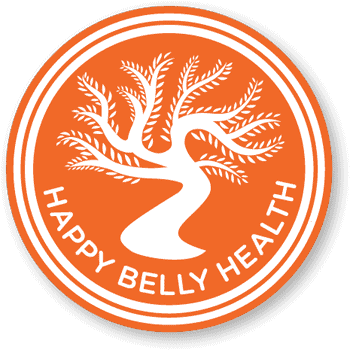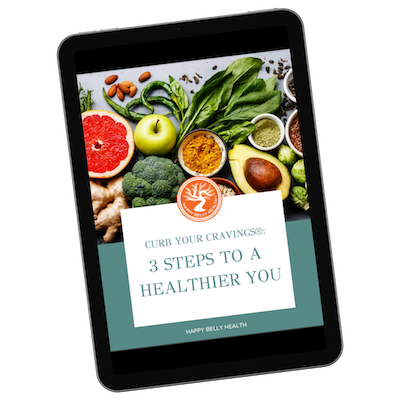Every healthy human carries trillions of bacteria in their body – a few pounds worth. The largest colonies live in our digestive system, and many beneficial species help us to survive. As long as the amount of beneficial bacteria is kept high in the body and the immune system is kept strong, then populations of potentially harmful bacteria are typically kept under control. The health of your gut determines what nutrients you absorb and what toxins, allergens, and microbes are kept out. Gut health is directly linked to the health of your whole body. However, the typical American modern diet and lifestyle can imbalance beneficial bacteria to the point that harmful bacteria flourish and wreak all sorts of havoc on the body, from constipation to behavioral problems to IBS to a compromised immune system to cancer.
In fact, many people struggle with dysbiosis, an imbalance of microbes in the digestive tract that can lead to a whole host of health ailments and disease. Typically, we become ill due to low-virulence organisms. Unlike salmonella, which can cause the immediate (and often violent) symptoms of food poisoning, low-virulence microbes are insidious. They cause ongoing inflammatory symptoms that almost always go undiagnosed and, if untreated, they become deep-seated and cause chronic health problems. (Inflammation, pain, swelling, and discomfort are our body’s ways of telling us to stop a behavior and let the body heal. Many times we just take medications to remove the inflammatory irritations and further suppress our body’s ability to signal distress.)
There are many causes of dysbiosis, most of them common in our modern way of life. Ongoing stress, chemical exposure, a diet high in sugars and processed foods, and chronic use of medications (particularly oral contraceptives, antibiotics, steroids, antidepressants, and NSAID painkillers) are all ways in which we disrupt healthy bacterial balance in our guts. Low-fiber diets may decrease transit time, or how long it takes food to move through our GI tract and allow more time for bacteria to proliferate. Some people, including those with Type 2 Diabetes, may have reduced digestive enzyme output, which overfeeds gut microbes via poor food breakdown. Many people (and especially those taking proton pump inhibitor drugs for an extended time (e.g. omeprazole, Protonix®, or Nexium®) may also have reduced stomach acid, which is a primary defense against harmful bacteria. NSAID painkillers (e.g. ibuprofen) eliminate pain artificially but also block healing and repair; ongoing use can increase intestinal permeability (which makes your gut “leaky” and can cause food sensitivities or other inflammatory dynamics) and increase your risk of ulcers. All these circumstances create an opportunity for opportunistic, harmful microbes to “move in” and multiply.
One of the most common forms of dysbiosis is a fungal infection caused by the overgrowth of a microbe called Candida albicans, though other species of yeast can also overgrow. Candida is normal in the human gut, but it can readily overgrow via sustained stress or other microbial imbalances. This species is very effective in colonizing your GI tract and causing symptoms such as anxiety, abdominal bloating, fatigue, allergies, weight issues, food sensitivities, strong sugar cravings, recurring infections, and/or fuzzy thinking. Damage from Candida can also cause leaky gut, which can promote food sensitivities. Another common invader is Helicobacter pylori, the most common cause of stomach ulcers and a contributor of poor digestion.
Sometimes dysbiosis is just an imbalance of normal gut microbes in the wrong place, such as what happens in small intestinal overgrowths including SIBO (small intestinal bacterial overgrowth) and IMO (intestinal methanogen overgrowth). These overgrowths are the primary cause of irritable bowel syndrome (IBS).
Slow and persistent treatment of these imbalances is key. One of the most important things you can do to combat bacterial overgrowth is to stop feeding the invader. Making time to eat in a calm environment, properly chewing food, and drinking only sips and not gulps of water during meals helps ensure robust digestive secretions are available to break down foods. Choice of food can also matter. For Candida specifically, a diet that eliminates all sugar, alcohol, bakers’ and brewers’ yeast, vinegar, and high-carbohydrate foods (especially all refined grains, sweeteners, and fruit juices) can be helpful. The resulting diet is high in fiber, improves stool transit time, and is incredibly beneficial in growing diverse beneficial gut flora: ample vegetables, proteins, healthy oils and fats, nuts and seeds, and whole fruits. Some may also consider adding supplemental fiber via ground psyllium husks or ground flaxseeds. Typically this sort of cleansing diet is effective if implemented for at least 3 months. As you experience symptom relief, begin to add back other foods slowly (one at a time for several days) and take careful note of how you feel.
Many natural herbs and plant extracts can help to rebalance overgrowths and heal your gut. For Candida, these include garlic, undecylenic acid, grapefruit seed extract (avoid if you take prescription medications), capryllic acid (coconut-derived), oregano oil, berberine, and pau d’arco extract. In some cases (such as for H. pylori), mastic gum can be healing. Glutamine, aloe vera, deglycyrrhizinated licorice (DGL), slippery elm, marshmallow root, cabbage juice, and zinc carnosine are all healing and soothing to an inflamed gut.
When overgrowths are killed, they often release toxins which can make symptoms worse for a few weeks. This is called a “die-off” reaction. A binder such as activated charcoal may be helpful in managing these symptoms.
It is also important to support the proliferation of healthy bacteria in your gut while you are trying to rebalance the less desired bacteria. Take a daily probiotic supplement or eat cultured, fermented foods. Begin slowly and increase slowly, but work your way up to a significant daily dose (e.g. at least 15 billion CFUs of a multi-strain probiotic or several teaspoons of cultured food).
If you would like some customized support to delve deeper into your health and nutrition, let’s chat.
Resources: Lipski, Elizabeth, Digestive Wellness, McGraw-Hill, 2005 and Hyman, Dr. Mark, Ultraprevention, Atria, 2005. © Purpose Inc., The School of Applied Functional MedicineTM





